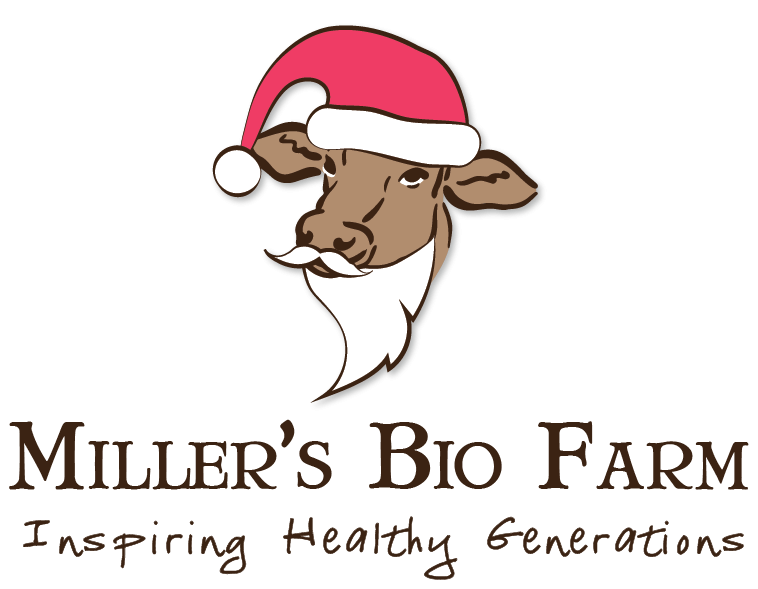Is beef rennet really the best option?
posted on
September 25, 2020

This year, we started getting the same question from a bunch of our awesome customers. It goes something like this, “I’m vegetarian. Can you make A2 cheese with vegetable rennet?”
Of course, I relay all feedback to farmer Aaron. So, he started looking into it. We went down a rabbit hole of knowledge on this one. It turns out, there’s good reasons we use beef rennet.
First, let’s all get on the same page. What is rennet?
To make cheese, you add culture to milk and let it ferment. Then, you add rennet, which separates the milk into curds and whey. Then you press the curds and age them. Voila cheese!
Sure, you can also use vinegar or citric acid to separate the milk for fresh cheeses like paneer, ricotta, or even mozzarella. But, for an aged cheese, you need to use rennet.
I called Ephraim at Alpine Heritage Creamery, our cheesemaker (you can read more about them here). I asked him why he doesn’t use vegetable rennet.
Ephraim told me that the best aged cheese is made with beef rennet. It produces the best taste and texture and has a great shelf life.
Alpine Heritage Creamery follows traditional cheesemaking techniques that have been used for 10-20 generations.
He also said that vegetable rennet is genetically modified and highly processed. Wait. What!?
This really got me thinking. He had a lot of great info about different types of rennet but wasn’t sure about the nitty gritty details. He referred me to his rennet distributor, Dairy Connection. Of course, I gave them a call! Here’s what I found out from the technician.
Rennet is an enzyme created in the stomach of ruminant animals - animals with four stomachs like cows, goats, deer, and giraffes. Chymosin is the key component.
Chymosin is an enzyme that coagulates (or curdles) the casein (or protein) in milk. The best chymosin comes from calf gullet (the pre-stomach).
There are three main types of rennet and how they’re made:
Veal/calf rennet: Made by grinding calf gullet and mixing it with salt. The powder is put in a solution that extracts the chymosin. It’s a liquid rennet, and this is what the cheesemaker uses.
You only need a little bit. Ephraim said he uses 60ml of rennet per 1,000 pounds of milk. That’s 1.93ml per 1 gallon of milk.
Using calf gullet makes sense in a strange way, as calves are a byproduct of the dairy industry.
The calf gullets used in our rennet are sourced from milk-fed veal calves mainly from New Zealand and Australia. I’m not fond of the veal industry; this is an ugly truth.
Fermentation-produced chymosin: It’s a genetically modified organism! They splice genes in a mold to produce chymosin.
The lab tech I spoke with wasn’t sure how they can make the claim that it’s GMO-free, but somehow the rennet and cheese companies make that happen.
Fermentation-produced chymosin is the most popular rennet for “certified organic” and “certified vegetarian” cheeses. It makes a good product.
Microbial rennet: Made when Rhizomucor miehei mold grows on a nutrient base that’s primarily soy. Yes, that’s right, soy. And, that means that the nutrient base is most likely GMO!
Mold rennet is also used in “certified organic” and “certified vegetarian” cheeses. However, it’s not the best. It tends to produce undesirable bitter flavors. It also does not age very well.
There are some less popular alternatives to these three rennets.
You can use squares of dried salted calf stomach, which has been done for thousands of years. You can use thistle, which is traditionally used for specific cheese in Spain and Portugal and is really expensive. You can also make soft cheeses from wild rennet from plants like sorrel, cardoon, artichoke, and fig.
However, these rennets are typically used for making cheese at home. They would not produce a cheese that’s consistent, tastes good, and holds up well. Most farmers and cheesemakers would not want to dabble with them, as they’d end up with a lot of waste and unhappy customers.
In fact, I asked Ephraim if he would use straight up calf stomach from farmer Aaron’s farm. He said that they’ve considered it. But, it would not be consistent. The rennet would vary in strength based on the season, the calf, the age of the rennet, and so many other factors.
So, what do you think? Would you prefer cheese made from the most natural type of rennet - beef rennet? Or, would you prefer cheese made from GMO vegetable rennet?
Food is too complicated these days. I’m happy that there are still small farms like Miller’s Bio Farm that are willing to wade through the muck, constantly learn more, and make educated choices.




